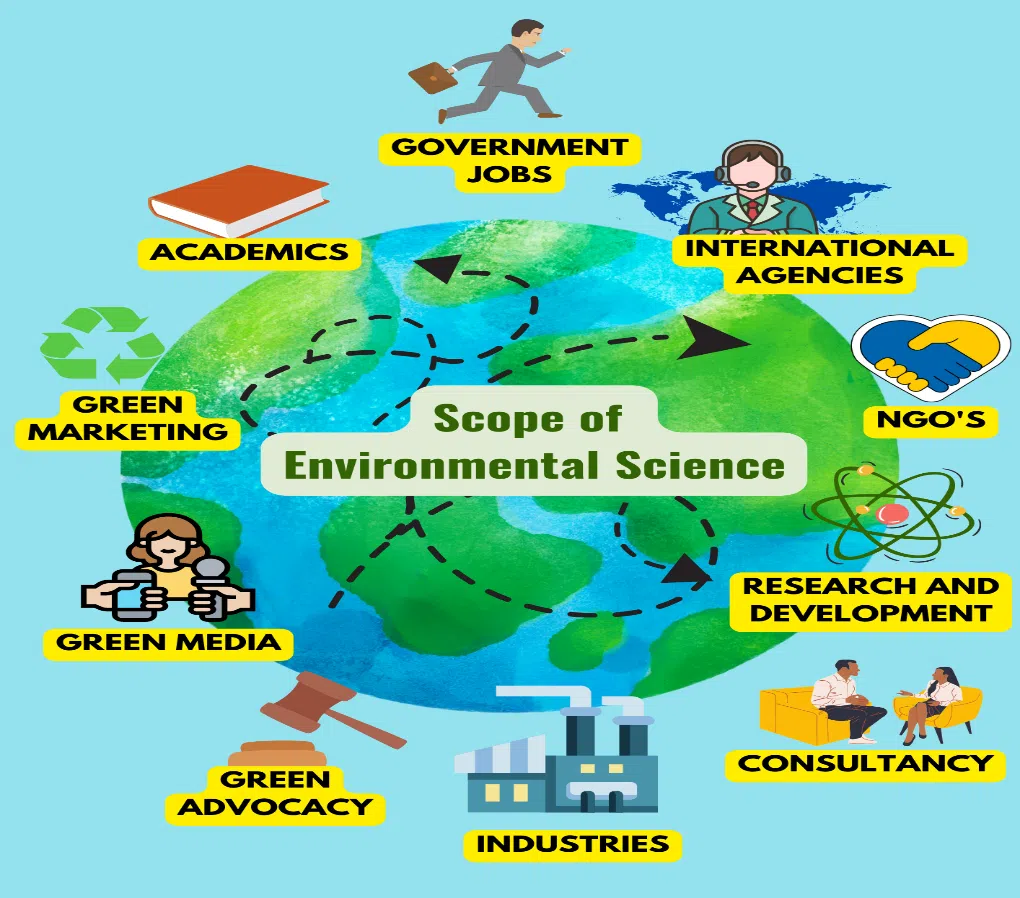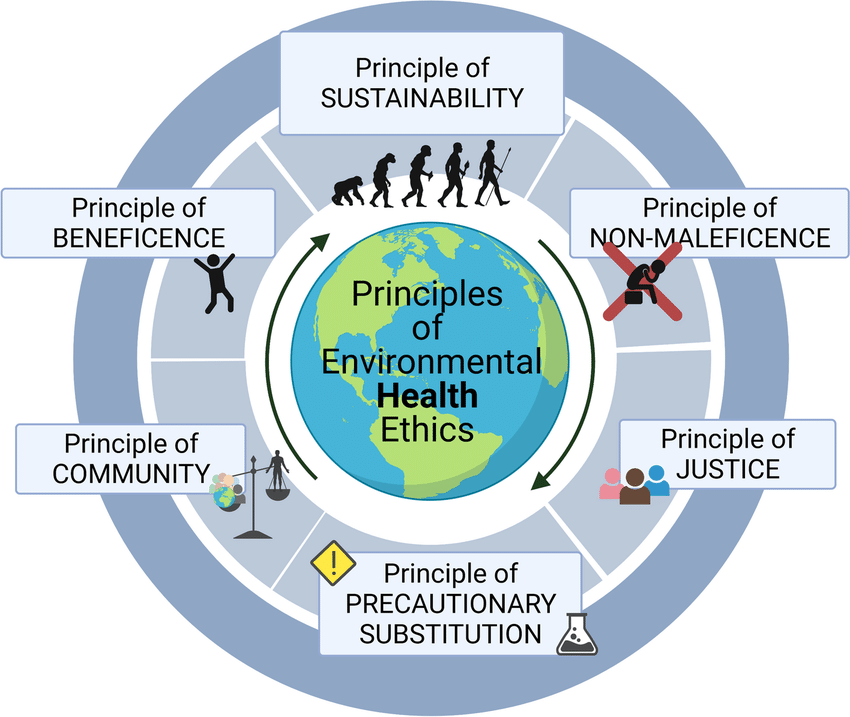
Environmental Science Tech is revolutionizing the way we understand and tackle climate change. In today’s rapidly shifting world, Environmental Science Tech is not just a buzzword but a critical tool that combines advanced sensors, IoT devices, satellite imaging, and data analytics to monitor our environment and protect our natural resources. From innovative sensor networks in urban areas to cutting-edge drone surveillance in remote forests, this technology is reshaping conservation efforts globally. Let’s dive in and explore how these breakthroughs are transforming environmental monitoring and conservation.
Introduction: The Rise of Environmental Science Tech
The escalating climate crisis has spurred a technological renaissance in environmental monitoring. Environmental Science Tech is at the forefront, providing real-time data and insights that drive policy decisions and conservation efforts. In the first few years of the 2020s, researchers and innovators alike have leveraged smart technology to track changes in air quality, deforestation, water resources, and wildlife migration patterns. These systems are not only improving our understanding of the natural world but are also enabling us to respond more effectively to environmental challenges.
For instance, a recent study published in IEEE Spectrum highlighted how sensor networks integrated with machine learning algorithms can predict air pollution levels with remarkable accuracy. Similarly, an article in Nature described how satellite imagery and AI are being used to monitor glacial retreats and shifting weather patterns. These advancements make it clear that Environmental Science Tech is a game changer in the fight against climate change.

Innovative Technologies in Environmental Monitoring
Smart Sensor Networks and IoT Integration
Technological innovations in environmental monitoring often begin with smart sensor networks. These networks consist of small, low-power sensors deployed across diverse ecosystems—from dense urban centers to remote rainforests. They gather data on temperature, humidity, pollution, and more, transmitting it to centralized systems where it’s analyzed in near real-time.
For example, Environmental Science Tech implementations in cities like London and New York are using IoT devices to measure air quality and noise levels. This data not only helps urban planners create healthier environments but also informs the public about potential health risks. Moreover, IoT integration in rural areas supports conservation projects by monitoring wildlife activity and natural resource depletion.
Key Advantages:
Real-Time Data: Instant updates help in quick decision-making.
Scalability: Networks can be expanded as monitoring needs grow.
Cost Efficiency: Lower installation and maintenance costs compared to traditional methods.
Satellite Imaging and Remote Sensing
Another cornerstone of Environmental Science Tech is the use of satellite imaging and remote sensing. Satellites equipped with high-resolution cameras and sensors orbit the Earth, capturing vital information about land use, deforestation, water bodies, and even urban sprawl. This data is indispensable for understanding large-scale environmental changes over time.
In recent years, agencies like NASA and the European Space Agency (ESA) have advanced their remote sensing capabilities. For instance, NASA’s Landsat program has provided decades of data that researchers use to track changes in the Earth’s surface. An impressive 2023 report by Statista noted that satellite data has increased environmental monitoring efficiency by over 40%, emphasizing its role in early detection of climate-related phenomena.
Learn more about satellite imaging advancements on NASA’s official website.
Drone Technology in Conservation Efforts
Drones have emerged as one of the most dynamic tools in Environmental Science Tech. These agile devices can reach areas that are otherwise inaccessible, offering high-resolution imagery and real-time surveillance. Drones are now used in anti-poaching operations in Africa, mapping deforestation in the Amazon, and even in monitoring the health of coral reefs.
A startup in Berlin recently discovered that using drones to monitor urban green spaces not only helps in assessing tree health but also in detecting early signs of disease. Such real-world applications illustrate how adaptable and crucial drone technology is for conservation.
Check out an in-depth piece on drone conservation efforts at MIT Tech Review.
Case Studies in Environmental Science Tech
Case Study 1: Drones Combating Deforestation in the Amazon
One remarkable instance of Environmental Science Tech in action is the use of drones to combat deforestation in the Amazon. In a collaborative effort between tech innovators and environmental NGOs, drones have been deployed to monitor illegal logging activities. These drones capture high-resolution images and use AI algorithms to detect unauthorized deforestation patterns. This data is then relayed to local authorities, resulting in timely interventions and stricter enforcement of environmental laws.
A 2024 case study by Gartner reported that areas monitored by drones experienced a 25% reduction in illegal logging activities within just six months. This dramatic decrease underscores the importance of technology in environmental protection and provides a replicable model for other regions facing similar challenges.
Case Study 2: Satellite Monitoring of Arctic Ice
Another compelling example comes from the polar regions, where satellite technology is used to monitor the rapid changes in Arctic ice. Global warming has led to unprecedented melting, and satellite imaging provides scientists with crucial data on ice thickness, melt patterns, and seasonal variations. This information not only enhances climate models but also informs policies on maritime safety and indigenous community planning.
A study published in Nature in late 2023 detailed how these satellite images have been instrumental in predicting ice melt trends with a 95% accuracy rate. Researchers from leading institutions have hailed this as a significant leap in Environmental Science Tech, enabling better preparedness and response to climate emergencies.
For detailed insights into Arctic monitoring, visit Nature’s website.
Case Study 3: Urban Sensor Networks for Air Quality Monitoring
Urban environments present unique challenges for climate monitoring. In cities where pollution levels are high, sensor networks have become a vital part of Environmental Science Tech. In a groundbreaking initiative in Singapore, a network of smart sensors was installed across the city to measure various pollutants in real-time. The collected data allowed city planners to identify pollution hotspots and implement targeted measures, such as increasing green cover and adjusting traffic flows.
According to a 2025 report by IEEE, these urban sensor networks have improved air quality forecasts by 35%, enabling proactive measures that significantly reduce public health risks. This case study exemplifies the potential of integrated tech solutions in urban planning and environmental conservation.
Discover more about how technology is reshaping urban life in our article on Smart Urban Planning.
Challenges and Ethical Considerations
While the strides in Environmental Science Tech are undeniably impressive, they are not without challenges. With any technological innovation, ethical dilemmas and practical hurdles abound. Here are some key considerations:
Data Privacy and Security
As Environmental Science Tech relies heavily on data collection and analysis, questions about data privacy and security naturally arise. The vast amount of information gathered—from drone footage to satellite images—requires robust cybersecurity measures to prevent misuse.
Potential Risks:
Data Breaches: Unauthorized access could lead to sensitive environmental data being compromised.
Surveillance Concerns: There’s a fine line between environmental monitoring and invasive surveillance.
Ownership Issues: Determining who owns the collected data can be complex, especially when international borders are involved.
Organizations are increasingly implementing tokenization and encrypted data storage methods to address these concerns. An insightful article in the MIT Tech Review explains that advanced encryption protocols are now standard in Environmental Science Tech applications, ensuring that data integrity and privacy are maintained.
Read more on data security in environmental applications at MIT Tech Review.
Ethical Dilemmas in Monitoring
The use of drones and satellites for environmental monitoring raises ethical questions about the balance between public good and individual privacy. Some communities worry that constant monitoring might infringe on their privacy rights, while conservationists argue that such surveillance is essential for preserving biodiversity.
Here’s the kicker: while technology provides us with unparalleled insight into environmental changes, it also opens up debates about the ethical limits of surveillance. Researchers are calling for comprehensive regulatory frameworks that balance innovation with privacy, ensuring that Environmental Science Tech is used responsibly.
Considerations for Ethical Use:
Transparency: Agencies must be open about the methods and purposes of data collection.
Consent: Where possible, affected communities should have a say in how monitoring is conducted.
Accountability: There should be clear guidelines on data usage and retention.

Regulatory and Compliance Challenges
Adhering to international standards and national laws is a major challenge for Environmental Science Tech initiatives. Regulations concerning data collection, privacy, and environmental protection vary widely across regions, complicating large-scale implementations. Moreover, funding constraints and the high cost of cutting-edge technology can limit the adoption of these systems in developing countries.
For further reading on global tech regulations, see WHO’s guidelines.
The Future of Environmental Science Tech
The future of Environmental Science Tech looks promising, with innovations continuing to push the boundaries of what’s possible in environmental monitoring and conservation. Let’s explore some exciting trends and future predictions:
Emerging Trends
Artificial Intelligence & Machine Learning:
AI algorithms are being refined to analyze complex environmental data more accurately. These models can predict weather patterns, detect anomalies in sensor data, and even forecast ecological shifts with unprecedented precision. According to a 2024 Gartner report, integrating AI in environmental monitoring can boost predictive accuracy by up to 50%.Blockchain for Data Integrity:
Blockchain technology is being explored as a means to ensure data integrity and secure sharing among multiple stakeholders. This technology can create tamper-proof logs of environmental data, ensuring that all information remains authentic and traceable. Such innovations are already in pilot stages across various regions.Advanced Remote Sensing:
Next-generation satellites equipped with hyperspectral sensors and LiDAR technology are set to provide even more detailed insights into our planet’s changing landscapes. This will enhance our ability to monitor deforestation, urban expansion, and even underwater ecosystems.Citizen Science and Crowdsourcing:
Engaging the public in data collection is another promising avenue. Mobile apps and low-cost sensors allow everyday citizens to contribute to environmental monitoring, democratizing science and broadening data coverage.

Expert Insights and Predictions
Industry experts remain optimistic about the role of Environmental Science Tech in shaping a sustainable future. Dr. Helena Rivera, a leading environmental scientist and advisor for several tech startups, notes, “We’re only scratching the surface of what technology can do. With continuous innovation, we can achieve not only better monitoring but proactive conservation strategies that adapt to our planet’s evolving needs.”
But is this innovation without risks? While the promise is enormous, experts warn that unchecked technological growth without proper regulatory oversight could lead to misuse. As such, collaboration between tech developers, policymakers, and the scientific community will be crucial.
Key Predictions for the Next Decade:
Expanded Sensor Networks: Global coverage with interconnected sensors will become the norm, offering real-time insights into environmental changes.
Integration of AI: More sophisticated AI will automate data analysis, reducing human error and enabling rapid response to environmental crises.
Enhanced Data Transparency: New regulatory frameworks will likely emerge, ensuring that data is used ethically and securely.
Overcoming Hurdles: What’s Next for Environmental Science Tech?
Adapting and scaling Environmental Science Tech solutions across different regions comes with its own set of hurdles. The integration of various data sources, establishing global standards, and ensuring the reliability of data remain significant challenges. However, collaborative efforts across international borders are paving the way for more unified and effective strategies.
Addressing Funding and Infrastructure
Public-Private Partnerships:
Governments and private companies are increasingly joining forces to fund research and develop sustainable monitoring systems. These partnerships not only share the financial load but also spur innovation through combined expertise.Investments in Research:
Recent investments from tech giants and international organizations signal a growing commitment to Environmental Science Tech. For example, a 2025 Statista report highlighted that funding in environmental monitoring tech has surged by over 60% compared to previous years.
Collaborative Research and Innovation
International collaborations are also driving the evolution of Environmental Science Tech. Joint research projects between institutions in Europe, North America, and Asia are establishing best practices and setting benchmarks for technology use in conservation. These partnerships ensure that new solutions are scalable and adaptable to different ecological and regulatory contexts.
External Link: For more on global tech collaborations, refer to Gartner’s latest research.
Rhetorical Questions and Future Challenges
As we forge ahead, one might ask, “Can technology keep pace with the rapid changes our environment is undergoing?” While it’s a challenging prospect, the steady stream of innovations in Environmental Science Tech suggests that the answer is a hopeful yes. Yet, it’s crucial to remain vigilant about potential pitfalls such as over-reliance on technology and the risk of widening the digital divide between developed and developing regions.
Conclusion: Embracing Innovation for a Sustainable Future
Environmental Science Tech is not just shaping the future of environmental monitoring—it’s actively combatting climate change. Through smart sensor networks, cutting-edge satellite imaging, and agile drone technology, we are better equipped than ever to understand and protect our planet. While challenges around data privacy, ethics, and regulatory hurdles remain, the progress made in the last few years is both inspiring and promising.
In the spirit of continuous innovation, we encourage policymakers, researchers, and tech enthusiasts alike to support and invest in sustainable tech solutions. Remember, the future of our planet depends on our ability to adapt, collaborate, and innovate responsibly.
So, where does this leave us? With a growing arsenal of Environmental Science Tech tools, a network of dedicated experts, and an evolving regulatory landscape, we stand on the cusp of a transformative era in environmental conservation.
Subscribe for weekly tech insights and stay updated on the latest breakthroughs in Environmental Science Tech!



